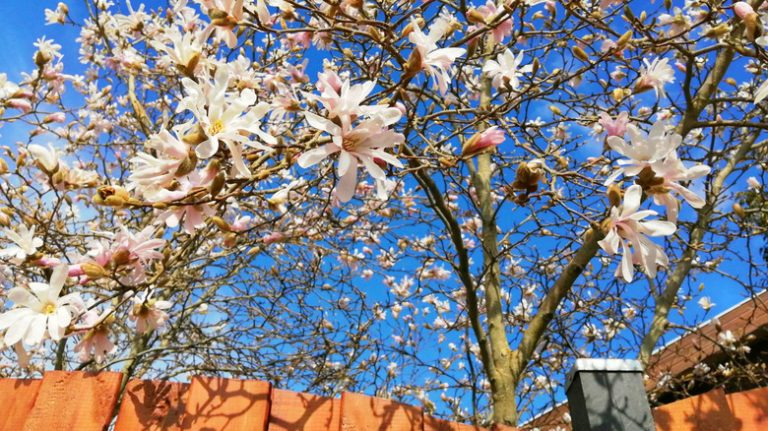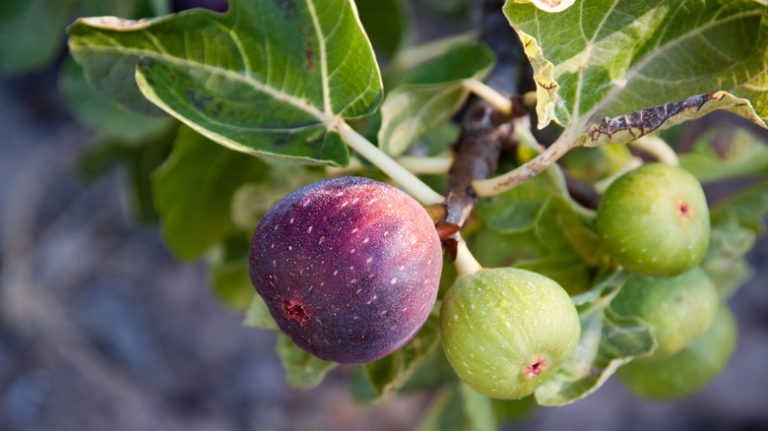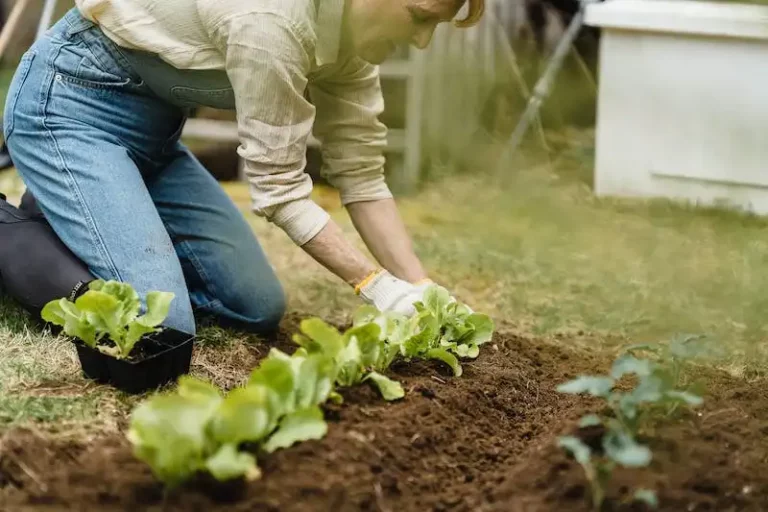Growing magnolias from seed can be a rewarding and worthwhile endeavor for any backyard or landscaping enthusiast. Magnolias are beautiful ornamental trees that can add a touch of elegance to any landscape. While many people choose to purchase established magnolia trees from nurseries, there is something special about growing your own from seed.
Understanding the process of propagating magnolia seeds and how to grow a magnolia tree from seed is essential for anyone interested in this method. Magnolia seeds are found in fruiting pods, or seed pods, that develop on the tree. These pods vary in size and color depending on the species of magnolia tree, but they typically contain small seeds that are black or dark brown in color.
Harvesting magnolia seeds should be done in the late fall or winter months when the pods have turned brown or black and are ready to be collected. This is also the time when the fruit surrounding the seeds has ripened and fallen off or been eaten by birds. These seeds need a period of chilling, or stratification, in order to germinate, so planting them in the wild or in a saucer in your backyard is a good method.
Magnolia grandiflora Southern Magnolia Seeds
Southern Magnolia (Magnolia grandiflora) is a beautiful tree native to the southeastern United States. It is known for its large, fragrant flowers and glossy evergreen leaves. If you are a neophyte gardener or simply want to try your hand at growing a magnolia from seed, this article will help you understand the process of propagating Magnolia grandiflora seeds.
Firstly, it’s important to note that Magnolia grandiflora seeds can be a bit tricky to germinate. The fresh seed is found in the fruit, which is a cone-like structure that turns from green to brown as it matures. The fruit contains bright red seeds that are covered in a fleshy coating. These fruits can take up to a year to ripen and should be harvested in the late fall or early winter.
Once you have collected the fruits, you will need to remove the fleshy coating from the seeds. This can be done by soaking the seeds in water and then scrubbing them with a brush or by macerating them until the coating comes off. After removing the coating, the seeds should be allowed to dry for a few days before planting.
It’s worth noting that Southern Magnolia seeds have a hard outer coat that can inhibit germination. To help break this dormancy, a method called stratification can be used. Stratification involves subjecting the seeds to a period of cold temperatures, typically around 30 to 40 degrees Fahrenheit, for several months. This can be achieved by planting the seeds in a pot or tray, placing them in a plastic bag, and placing them in the refrigerator.
After the chilling period, the seeds should be ready to germinate. You can plant the seeds in a pot or directly in the ground, depending on your preference. If planting in a pot, fill it with a well-draining potting mix and plant the seed about 1 inch deep. Keep the soil consistently moist but not wet, and provide the seedling with bright, indirect light.
It’s important to note that Southern Magnolia seeds can take a long time to germinate, sometimes up to several months. So be patient and keep an eye on your seeds. Once the seedling is established, you can transplant it to a larger pot or directly into your backyard.
Magnolia grandiflora trees can grow quite large, so make sure you have enough space for it in your garden. They are also popular choices for landscaping due to their beautiful flowers and evergreen foliage. The flowers are large and white, often reaching up to 12 inches in size.
If you can’t find Magnolia grandiflora seeds or want an alternative method of growing a magnolia tree from seed, you can try harvesting seeds from wild magnolias or purchasing them from a reputable source. Additionally, you can also try pollenating the flowers of an existing Southern Magnolia tree and collecting the resulting seeds.
In conclusion, growing a magnolia tree from seed can be a rewarding and worthwhile endeavor. Whether you choose to plant Southern Magnolia seeds or try an alternative method, the beauty of these trees will surely enhance your backyard or landscaping.
Propagating Magnolia Seeds: How To Grow A Magnolia Tree From Seed
Magnolias are beautiful trees that can enhance any landscape with their stunning flowers and unique foliage. While many people choose to purchase and plant mature magnolia saplings, some may prefer to grow their own trees from seed. Propagating magnolia seeds can be a rewarding and cost-effective alternative to buying fully-grown trees. In this blog post, we will discuss the method of propagating magnolia seeds, including harvesting, stratification, and planting.
Harvesting Magnolia Seeds
To start the process of growing a magnolia tree from seed, you first need to collect the seeds. The magnolia seedpods, which resemble large berries, can be found on the tree in late summer or early fall. Once the seedpod turns from green to black, it is ready for harvest. Use your hand or a pair of garden shears to remove the seedpods from the tree.
Stratification Method
After harvesting the magnolia seedpods, they need to undergo a process called stratification. Stratification involves chilling the seeds in a moist environment and mimicking the conditions they would naturally experience during the winter months. This process helps break the seed’s dormancy and enhances germination. Fill a saucer or a similar container with moist peat moss or vermiculite and place the seeds on top. Cover the seeds lightly with more peat moss or vermiculite and place the container in the refrigerator for approximately three to six months.
Planting and Germination
Once the stratification period is over, it’s time to plant the magnolia seeds. Prepare a well-draining potting mix in a small container or seed tray. Make sure the container has drainage holes at the bottom. Place the pre-stratified seeds on top of the soil and cover them lightly with a thin layer of soil. Water the seeds gently to ensure the soil is moist but not waterlogged.
Keep the container in a warm and sunny location, such as a backyard or a greenhouse. The seeds will usually germinate within a few weeks to a few months. As the seedlings grow, provide them with regular watering and adequate sunlight to encourage healthy growth. Transfer the seedlings to larger pots as they outgrow their current containers. It may take several years for the seedlings to reach a size suitable for planting in the ground.
It’s worth noting that not all magnolia seeds will germinate, and the resulting trees may not necessarily resemble the parent tree. Some magnolia species require specific conditions or pollination from another magnolia tree to produce viable seeds. Additionally, wild magnolias may disperse their seeds through bird consumption and defecation, mimicking the natural process of seed dispersal.
In conclusion, propagating magnolia seeds can be a rewarding and exciting endeavor for any neophyte gardener or landscaping enthusiast. By understanding the process of harvesting, stratification, and germination, you can successfully grow your own magnolia trees from seed and enjoy their beauty in your garden or landscape.
Propagating Magnolia Seeds
If you’re a neophyte to the world of magnolias, understanding the method for propagating magnolia seeds may seem daunting at first. However, with a little bit of patience and knowledge, you can successfully grow your own magnolia tree from seed. Here is a step-by-step guide to help you get started.
Finding and Harvesting Magnolia Seeds
The first step in propagating magnolia seeds is finding a mature magnolia tree that produces viable seeds. Look for black pods or fruits on the magnolia tree, as they contain the seeds. These pods will be ready for harvesting in late summer or early autumn.
Once the pods are ripe, you can collect them either by hand or by shaking the tree gently. Make sure to wear gloves, as the sap from the pods can be sticky and difficult to remove.
Prepping the Magnolia Seeds for Planting
After harvesting the pods, it’s important to extract the seeds. Cut open the pods with a knife or pruners and remove the seeds. Each pod will typically contain several seeds.
Before planting, the magnolia seeds need to undergo a process called stratification. This involves chilling the seeds to simulate winter conditions and break their dormancy. Place the seeds in a plastic bag filled with moist soil or a damp paper towel. Seal the bag and refrigerate it for three months.
Planting the Magnolia Seeds
After the stratification period, the magnolia seeds are ready to be planted. Fill a saucer-sized container with well-draining potting soil and place the seeds on the surface. Press them gently into the soil, but don’t bury them too deep.
Water the soil lightly to provide adequate moisture and cover the container with a plastic bag to create a greenhouse-like environment. Keep the container in a warm place, ideally around 70-75°F (21-24°C), and ensure that the soil remains consistently moist.
Within a few weeks to several months, depending on the magnolia species, you should start to see the magnolia seeds germinate and sprout seedlings. Keep in mind that germination can be an unpredictable process, and some seeds may fail to germinate.
Planting the Magnolia Seedlings
Once the magnolia seedlings have developed a few sets of true leaves, they are ready to be transplanted into individual pots or directly into the ground in your backyard. Choose a location with well-draining soil and plenty of sunlight.
It’s worth noting that magnolias can take several years to reach maturity and start flowering, so patience is key when growing them from seed. However, the reward of having your own magnolia tree in your landscape is definitely worth the wait.
With this understanding of the method for propagating magnolia seeds, you can now embark on your magnolia-growing journey and enjoy the beauty and fragrance of these stunning trees in your own backyard.
Harvesting Magnolia Seed Pods
If you have a magnolia tree in your backyard or are planning on growing one, you might be interested in propagating magnolia seeds. Harvesting the seed pods is the first step in this process.
Understanding Magnolia Seed Pods
Magnolia seed pods, also known as fruit or cones, typically come in two main varieties: the red seed pod of the Southern magnolia (Magnolia grandiflora) and the brown or black seed pod of wild magnolias. These seed pods contain seeds inside that can be used to grow new magnolia trees.
How to Harvest Magnolia Seed Pods
The best time to harvest magnolia seed pods is when they are mature and ready to open. This is usually in the late summer or early fall, depending on the specific type of magnolia and your location. You can tell that the seed pods are ready by gently squeezing them – if they are firm and don’t give under pressure, they are ripe.
To harvest the seed pods, simply remove them from the tree by hand. It’s best to wear gloves to protect your hands from any spines or thorns on the tree. If the seed pods are not yet ripe, you can try to speed up the ripening process by placing them in a paper bag with a ripe banana or apple. The ethylene gas produced by the fruit will help to ripen the seed pods.
Once you have harvested the magnolia seed pods, it’s important to store them properly until you are ready to plant them. Keep them in a cool, dry place for a few months to allow for natural chilling stratification, which will improve the chances of successful germination.
Alternative Method: Harvesting Wild Magnolia Seeds
If you don’t have access to a magnolia tree, you can try harvesting wild magnolia seeds. Look for trees in your local area that have mature seed pods and ask for permission before collecting any. Once you have the seed pods, you can follow the same process as described above to prepare them for planting.
In conclusion, harvesting magnolia seed pods is an essential step in the process of propagating magnolia trees. Whether you have a backyard tree or are collecting wild seeds, understanding the right time to harvest and how to prepare the seed pods will greatly increase your chances of successfully growing new magnolia trees.



